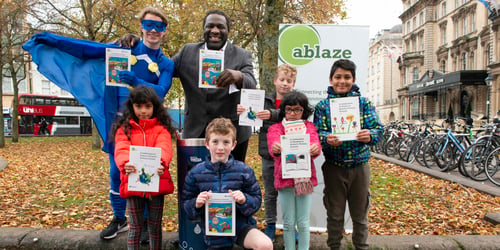
Our brand-new leak free water main supplying the village of Priddy, will save water and last for another hundred years or so.
Priddy Water Main
In September 2023 work began to replace the old leaky water main that supplies the Village of Priddy in the Mendip Hills.
The existing pipeline was over 70 years old and was losing a substantial amount of water to leaks. Replacing it with a brand-new system will save water and money, and future proof the supply for our customers in the area.
Digging up 18 km of pipework through beautiful Somerset countryside, some of which is an Area of Outstanding Natural Beauty, takes a huge amount of planning to minimise disruption and damage to the environment.
Here’s how we did it…

1. Careful planning. By surveying the old pipes and eliminating redundant sections, we were able to reduce the amount of pipework that needed to be replaced from 18 to 12 km – that meant a third less digging, disruption and costs.
2. Minimising disruption. Our top priority was to minimise the impact on local people during the works. We kept everyone informed of necessary road closures (and kept them to a minimum), and if the water had to be turned off, we used a temporary overground pipeline and tankers pumping directly into the system, to provide a continuous supply.
3. Reducing damage to the countryside. As you can imagine, digging a 12 km trench through the countryside could make quite a mess. To reduce digging we utilised the latest trenchless installation technologies, including pipe bursting, directional drilling and slip lining. These combined methods massively reduced the amount of open trenches that required excavating – in fact, phase 2 of the project was completed using 92% trenchless technology.
Read more about our trenchless tech below.
4. Looking after the environment. We worked closely with Natural England to protect the habitats in the area. The impact on local species such as newts, badgers and bats was assessed and a plan put in place to protect them. A finger tip search was conducted before any digging happened to make sure no creatures would be harmed.
5. Putting everything back the way it was. One of the most important jobs we do is repairing the land and restoring it to its former glory once we’ve finished. We reseeded any meadows that were disrupted and made sure we respected the diversity of native species in the area.
Work was completed in October 2024, having taken just over a year, with 14 people working on the project, and the new pipe should last for another hundred years or so.
Trenchless installation
At Priddy we used three trenchless installation techniques: Pipe bursting, directional drilling and slip lining. The process happens under the ground, meaning we don’t have to dig long open trenches, resulting in much less mess.

Pipe bursting is a way of laying new pipes, without having to dig up the old ones. The existing pipe is exposed every 200 metres and a machine pushes through the old pipe, smashing it apart and creating a larger tunnel for the new pipe to be pulled through. At Priddy we installed over 2 km of new pipework using this method.
Directional drilling uses a drilling rig to drill horizontally and create a tunnel under the ground to take the new water main. It can be used to install utilities under roads, railways, waterways, and other areas that are sensitive to construction.
Slip lining involves fitting a new pipe inside the old one without removing it or digging it up. A modern narrower plastic pipe is either pulled or pushed into the old pipe, creating a more durable and leak free water main. This is the simplest method of trenchless installation, but is not always suitable with older or damaged pipes.





